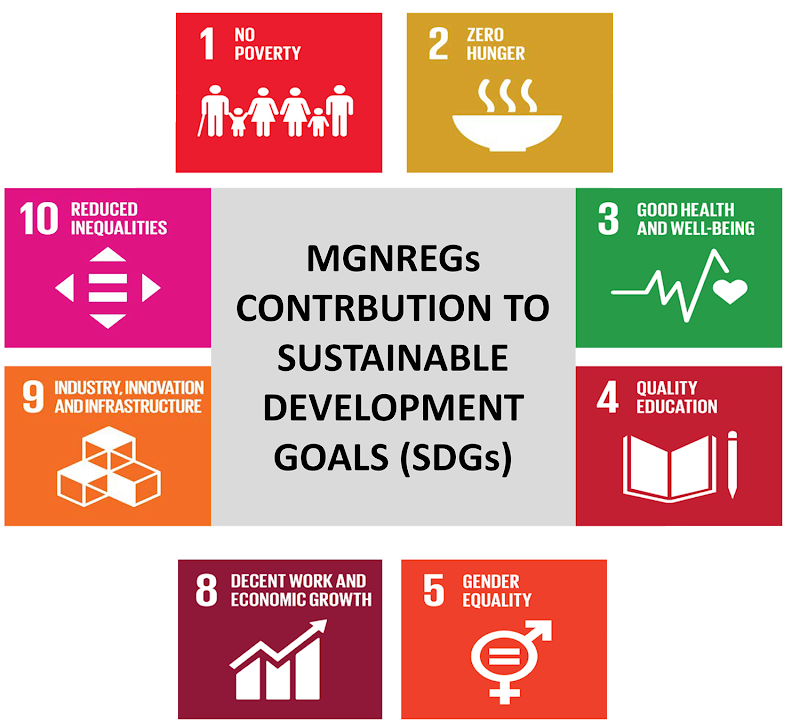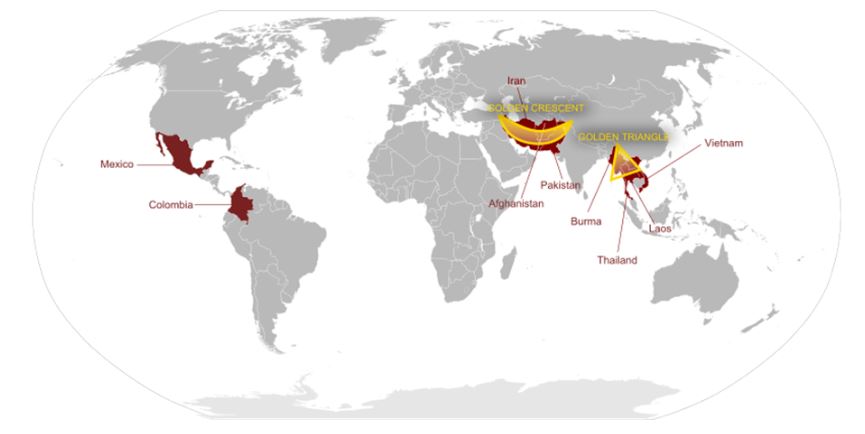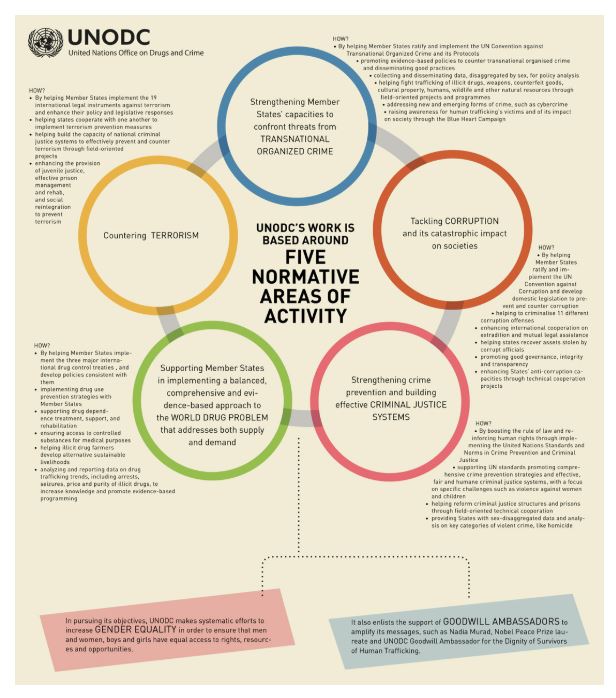IASbaba's Daily Current Affairs Analysis
IAS UPSC Prelims and Mains Exam – 7th July 2020
Archives
(PRELIMS + MAINS FOCUS)
MGNREGA: a ray of hope to secure livelihoods
Part of: GS Mains II and III – Govt schemes and policies; Welfare schemes; Economy and Unemployment issues
In news:
- Lakhs of poor rural households have already completed their quota of 100 days of work under the MGNREGA and will not be eligible for further benefits under the scheme for the rest of the year.
- Therefore, activists are urging the government to increase the quota of work to at least 200 days per household.
- Thousands of unemployed migrant workers have also returned to their villages and now dependent on MGNREGA wages.
- Given that COVID-19 was declared a national disaster, activists have demanded to reorient MGNREGA.

Important Value Additions
About MGNREGA
- Mahatma Gandhi National Rural Employment Guarantee Act (NREGA) was notified in 2005.
- Goal – to improve the livelihood security of people in rural areas.
- It is a universal scheme guaranteeing 100 days of wage employment in a year to every rural household that expresses a demand.
- This is labour law and social security measure that aims to guarantee the ‘Right to Work’.
- Every registered households receives a Job Card (JC) to track their work completed.
- Demand for work is aggregated at the village level and the scheme is implemented by the gram panchayat.
- The act was first proposed in 1991 by P.V. Narasimha Rao.
- The failure of provision for employment within 15 days of the receipt of job application from a prospective household will result in the payment of unemployment allowance to the job seekers.
- Employment is to be provided within 5 km of an applicant’s residence, and minimum wages are to be paid.
- Thus, employment under MGNREGA is a legal entitlement.
World Drug Report and UNODC
Part of: GS Prelims and Mains II and III – Role of international organizations; Security issues
In news:
According to the latest World Drug Report of the United Nations Office on Drugs and Crime (UNODC) –
- India in top five (fourth position) in terms of seizure of opium in 2018.
- Opium seizure – Iran, Afghanistan and Pakistan were the top 3 countries.
- India was at the 12th position in the world in terms of heroin seizure.
- Heroin seizure – Iran, Turkey, United States, China, Pakistan and Afghanistan.
- Global area under opium poppy cultivation declined for the second year in a row in 2019.
- Despite the decline in cultivation, opium production remained stable in 2019, with higher yields reported in the main opium production areas.
- Asia is host to more than 90% of global illicit opium production and the world’s largest consumption market for opiates.
- Asia accounted for almost 80% of all opiates seized worldwide in 2018.
- Outside Asia, the largest total quantity of heroin and morphine was seized in Europe (22% of the global total in 2018).
Do you know?
- Heroin is manufactured from the morphine extracted from the seed pod of opium poppy plants.
- Opium is illicitly produced in about 50 countries.
- However, close to 97% of the total global production of opium in the past five years came from only 3 countries.
- 84% of the total opium was produced in Afghanistan.
- Myanmar accounts for 7% of the global opium production, and Laos accounted for 1% of the opium production.
- Mexico accounts for 6% of the global opium production, while Colombia and Guatemala account for less than 1% of global production.

Pic: Opium Cultivation
Important Value Additions
About United Nations Office on Drugs and Crime (UNODC)
- UNODC is a United Nations office that was established in 1997.
- It is a member of the United Nations Sustainable Development Group.
- The office aims long-term to better equip governments to handle drug-, crime-, terrorism-, and corruption-related issues.
- These are the main themes that UNODC deals with: Alternative Development, anti-corruption, Criminal Justice, Prison Reform and Crime Prevention, Drug Prevention, -Treatment and Care, HIV and AIDS, Human Trafficking and Migrant Smuggling, Money Laundering, Organized Crime, Piracy, Terrorism Prevention.

Pic: UNDOC
India-China: disengagement process
Part of: GS Mains II and III – International Relations; India and its neighbours; Security issues
In news:
- India and China have begun the process of disengagement after Special Representatives (SRs) held talks.
- Pangong Tso is one of the most contentious areas of the current stand-offs, with the PLA moving about 8 km inside.
- Military commanders from both sides have indiciated that the de-escalation would take place at all the friction points — Galwan, Pangong Tso, Hot Springs.
Coronavirus is airborne: 239 scientists to WHO
Part of: Mains II and III – Health issue; Science – Health and Medicine
In news:
- 239 scientists from 32 countries have warned that Coronavirus has a great risk for airborne spread and WHO needs to revise guidelines.
- If airborne transmission is a significant factor, especially in crowded spaces with poor ventilation, the consequences for containment will be significant.
Do you know?
- According to current evidence and as per WHO, Covid-19 virus is primarily transmitted between people through respiratory droplets and contact routes.
- Airborne transmission means a person can contract the disease by breathing in the infected air as the tiny pathogens stay suspended in the air.
- Some of the most common examples of airborne diseases include chickenpox virus, influenza virus, norovirus and adenovirus.
Things to keep in mind if Coronavirus is airborne:
- Face-coverings and face-masks may be made mandatory even while practising social distancing, especially indoors or in crowded areas
- Large social gatherings to be avoided
- Proper ventilation and minimising the recirculation of air may be needed at offices, educational institutes and hospital settings
- Usage of ultraviolet lights to kill aerosols suspended in the air in closed settings
- Physical distancing and washing hands is still very important
- Health care workers may all need to wear N95 masks
- When indoors, one simple thing people can do is to open their windows and doors whenever possible
Bubonic plague
Part of: GS Prelims and Mains III – Science – Health and Medicine
In news:
- A city in northern China sounded an alert after a suspected case of bubonic plague or ‘Black Death’ was reported.
What is Bubonic plague?
- It is a rare but serious bacterial infection transmitted by fleas from rodents.
- It is a zoonotic disease and it can be transmitted to other animals or humans.
- It mainly results from the bite of an infected flea.
- It may also result from exposure to the body fluids from a dead plague-infected animal.
- It is one of the three plagues caused by bacterium Yersinia pestis. The other two being Septicaemic plague and Pneumonic plague.
- It is spread by Yersinia pestis bacteria and requires urgent hospitalisation. According to the WHO it can kill an adult in less than 24 hours, if not treated in time.
What are its symptoms?
- Swollen lymph nodes, which can be as large as chicken eggs, in the groin, armpit or neck. They may be tender and warm.
- Others include fever, chills, headache, fatigue and muscle aches.
Do you know?
- There are no reports of human to human transmission of bubonic plague. To prevent bubonic plague, people are generally advised to not touch dead animals and wear insect or fleas repellent in case of an outbreak.
- According to the WHO, a vaccine for the bubonic plague is available for individuals with high exposure to the plague.
(MAINS FOCUS)
AGRICULTURE/ GOVERNANCE/ ECONOMY
Topic: General Studies 2,3:
- Government policies and interventions for development in various sectors
- Indian Economy and issues relating to planning, mobilization, of resources
A way to Aatmanirbharta in agriculture
Context: For a large country like India with a 1.37-billion population, much of the food has to be produced at home i.e self-reliant in agricultural sector
Did You Know?
- During the 1950s & 60s, India was in a situation of ‘ship to mouth’, where in it was dependent on food aid from other countries
- However, today India has been a net exporter of agri-produce.
Difference in situation between 1960s & now
- In 1960s, if India had spent all its foreign currency reserves (about $400 million) just on wheat imports, it could import about 7 million tonnes (mt) of wheat.
- Today, India has foreign exchange reserves of more than $500 billion. Therefore, for importing 20 mt of wheat at a landed cost of $250/tonne, it would cost just $5 billion, which is simply 1% of India’s foreign exchange reserves.
- Therefore, the biggest reform of the last three decades that has given aatmanirbharta in food is the correction of the exchange rate, coupled with the gradual integration of India with the world economy
Agri-trade scenario in India
- Over the last 10 years (2010-11 to 2019-20) India has been a net exporter of agri-produce. In fact, it has been so ever since reforms began in 1991.
- The golden year of agri-trade has been 2013-14: exports at $43.6 billion and imports were at $18.9 billion, giving a net trade surplus of $24.7 billion
- For the past five years, agri-exports have been sluggish and sliding
- Agri-exports in 2019-20 were just $36 billion, and net agri-trade surplus at $11.2 billion.
How to increase the agri-trade surplus in coming years?
- Agri-trade policy to be based on principle of “comparative advantage”.
-
- That means exporting more where we have a competitive edge, and importing where we lack competitiveness
- The current agri-export basket of 2019-20 gives a sense of “revealed comparative advantage”.
- Marine products with $6.7 billion exports top the list followed by rice at $6.4 billion, spices at $3.6 billion, buffalo meat at $3.2 billion, sugar at $2.0 billion
- Diversification of subsidies
-
- Rice and sugar are heavily subsidised through free power and highly subsidised fertilisers, especially urea.
- Together, the power and fertiliser subsidies account for about 10-15% of the value of rice and sugar being produced on per hectare basis
- This is leading to virtual export of water as one kilogram of rice requires 3,500-5,000 litres of water for irrigation, and one kilogram of sugar consumes about 2,000 litres of water.
- However, we don’t give similar incentives for exports of high-value agri-produce like fruits and vegetables, spices, tea and coffee, or cotton. Thus, there is a need to provide subsidies to these crops as well
- Giving boost to Oil Palm
-
- On the agri-imports front, the biggest item, edible oil, is worth about $10 billion (in quantity terms, about 15 mt plus)
- Thus, there is a need for augmenting productivity and recovery ratio of oil from oilseeds, and in case of palm oil, from fresh fruit bunches.
- While mustard, sunflower, groundnuts, cottonseed have potential to increase oil production to some extent, the real potential lies in tapping oil palm
- Oil Palm is the only plant that can give about four tonnes of oil on per hectare basis.
- India has about two million hectares area suitable for oil palm cultivation, which can give 8 mt of palm oil.
Conclusion
If the government wants Aatmanirbharta in agriculture, oil palm is a crop to work on.
Connecting the dots:
- Dairy Sector and its challenges in the context of negotiations to join RCEP agreement
- Ashok Dalwai Committee
GOVERNANCE / ECONOMY/ SOCIETY
Topic: General Studies 2:
- Government policies and interventions for development in various sectors
- Indian Economy and issues relating to planning, mobilization, of resources
Rolling back the induced livelihood shock
Context: During the lockdown, India’s less-privileged workforce have witnessed falling incomes and loss of means of livelihood.
Pre-Pandemic Issues with Poverty
- Poverty Line: India’s poverty line has been a matter of debate due to its unrealistically low thresholds leading to low poverty numbers.
- Irregular Updation: There has also been ambiguity around poverty estimation due to irregular updating of official poverty lines and unavailability of data on consumption expenditure from National Sample Surveys in recent years
What can be the possible extent of Poverty in India?
- According to the household consumption expenditure reported in the PLFS, 2017-18 (which replaces the employment-unemployment surveys of the NSSO) and applying State-specific poverty lines (used by the erstwhile Planning Commission in 2011 based on the Tendulkar Committee recommendations, adjusted with current price indices), about 42% or around 56 crore people can be considered as poor before the lockdown was announced.
- Another 20 crore people were within a narrow band 20% above the poverty line given the people towards the lower half of the consumption expenditure distribution
Poverty Deepening due to Pandemic
- Certain estimates from the PLFS data extrapolated for the year 2020 suggest that about an additional 40 crore people were pushed below the poverty line due to the lockdown
- Around 12 crore of this lockdown-induced newly poor are in urban areas and another 28 crore people in rural areas.
- Those who were already poor are going to suffer a further worsening in their quality of life, a phenomenon known as poverty deepening.
- Before the lockdown, around 16% of the population had per capita consumption expenditure of about a third of the poverty line, managing their daily expenses with ₹30 per day or less.
- After the lockdown this could swell to more than 62 crore (47%) people pushed to such extreme poverty.
What should be the State response to prevent poverty deepening?
- Revamped and expanded NREGA needs to be made the fulcrum of the rural recharge.
-
- The demand for work is anticipated to increase by 25% with reverse migration-fuelled increase in rural labour supply.
- The revamped scheme would require providing 90 million workers guaranteed employment of 20 days of work/month for at least the next six months.
- This means an additional financial stimulus of ₹1.6-lakh crore.
- Universalisation of the Public Distribution System
-
- Recent experience of expanding food coupons to non-ration card holders in Delhi suggests that such measures are likely to exclude marginalised communities
- Thus, food distribution through PDS needs better equity focus in implementation.
- Stabilising urban economy
-
- Pandemic induced reverse migration from Urban areas to rural areas can bring instability to urban economy
- Urban employment guarantee programme becomes a dire necessity to stabilise the urban economy.
- A direct employment programme implemented through municipal corporations could be introduced to guarantee 20 days of work per month.
- This can be used to develop key social infrastructure in urban areas including slum development, drinking water supply, toilet construction, parks and common areas, urban afforestation and social forestry.
- The wages could be fixed with 30% premium over prevalent MNREGA benchmark average wage in the State.
- Subsidies like cash transfer can be provided to employers in MSMEs so as to revive their business
Conclusion
If the course of economic progress and development programmes are not reoriented, the implications could be severe with increasing hunger-related deaths and destitution, leading to social unrest and crime
Connecting the dots:
- Food Coupons Vs Subsidised Food provision
- Direct Benefit Transfer
- Periodic Labour Force Survey (PLFS)
(TEST YOUR KNOWLEDGE)
Model questions: (You can now post your answers in comment section)
Note:
- Correct answers of today’s questions will be provided in next day’s DNA section. Kindly refer to it and update your answers.
- Comments Up-voted by IASbaba are also the “correct answers”.
Q.1 Golden Crescent is one of Asia’s two principal areas of illicit opium production. It includes which of the following countries?
- Vietnam
- Laos
- Thailand
Select the correct code:
- 1 and 2
- 2 and 3
- 1, 2 and 3
- None of the above
Q.2 Consider the following statements with regard to MGNREGA:
- It is a universal scheme guaranteeing 100 days of wage employment in a year to every rural household that expresses a demand.
- The scheme is implemented by the gram panchayat.
- Employment under MGNREGA is a legal entitlement.
Which of the statements given above is/are correct?
- 1 only
- 2 and 3
- 1 and 3
- 1, 2 and 3
Q.3 Consider the following statements about Bubonic plague:
- It is a zoonotic disease and it can be transmitted to other animals or humans.
- It is a serious viral infection transmitted by fleas from rodents.
- There is no vaccine available.
Which of the statements given above is/are correct?
- 1 only
- 2 and 3
- 1 and 3
- 1, 2 and 3
ANSWERS FOR 6th July 2020 TEST YOUR KNOWLEDGE (TYK)
| 1 | D |
| 2 | D |
Must Read
About historical view of India’s foreign relations:
About Police violence in wake of TN Custodial deaths:
About de-escalation between India & China:














